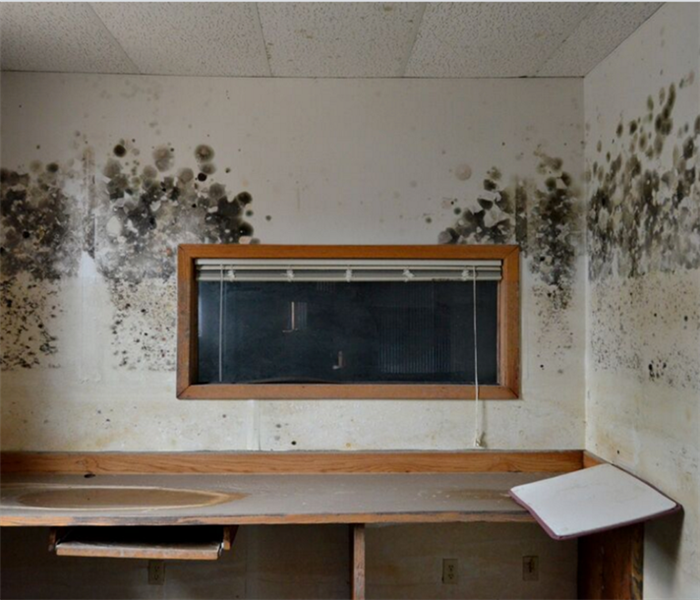Mold is Common in Idaho Resort Areas
8/24/2016 (Permalink)
SERVPRO of Nampa Caldwell has extensive experience with mold removal in Canyon County.
Our employees have received many hours of specific mold remediation training, and we are well equipped and staffed for mold remediation and removal.
Understanding Mold
Molds and other fungi are a unique classification of life called eukaryotes, which are neither plant nor animal. They reproduce by emitting microscopic spores which are similar to the seeds of a plant and can survive dormant for many years. The slightest bit of air movement can carry the spores great distances, which is why mold can spread quickly. This propensity for the spores to spread is why they are ever present in both indoor and outdoor environments. All that is necessary for them to take root and grow is for a suitable growth medium to remains wet for 48 to 72 hours. If this occurs in a dark room, with high humidity and warm temperatures, growth can accelerate significantly. Food residue, a layer of dust or soil, or cellulosic materials such as insulation, drywall or fabric, can all be suitable growth mediums.
Since some types of mold can be harmful to human health or cause damage to property, it is important to keep surfaces and materials in indoor environments clean and dry. However, mold spores are so pervasive that even the best housekeeping cannot prevent them from growing when indoor environments remain continuously wet for more than a couple of days.
Mold Problems are Common in Resort Areas
Modern buildings of every kind contain many plumbing fixtures and water based appliances that all offer opportunities for leaks, as well as roof leaks. In resorts, buildings leaks can go undetected until they become a big problem. Mold is common in resort areas, such as McCall and Cascade, ID, where structures are often unoccupied and can remain wet for extended periods. Attics, basements and crawlspaces are areas of occupied structures that are more frequently affected.
Mold Remediation Can Be Complicated
Successful remediation of a severe mold infestation is no small task. It requires specialized equipment and techniques to prevent the mold from spreading and protect the health of the workers and surrounding inhabitants. In most cases of severe mold infestation, the area must be inspected and tested by an environmental hygienist, who then develops a protocol for the remediation. The protocol normailly requires the affected area must first be contained and negative air pressure established within the containment. Powerful air scrubbers with HEPA filtration will be deployed, both inside and outside the containment area. HEPA filters can trap particles from the air down to .3 microns, including mold spores. Porous materials such as drywall, carpet, and upholstered furniture within the affected area must usually be discarded. Most non-porous surfaces can be cleaned. Wood structure often requires sanding to remove mold growth to a certain depth in the material. All materials to be discarded must be bagged within the containment area and then properly discarded. When the protocol has been completed the hygienist must return for clearance testing, and it is not uncommon for some aspects of the remediation to fail and need re-cleaning.
In order to prevent mold in your home or business, call us immediately when you identify wetness in your building. By drying out a wet structure quickly you can avoid mold growth altogether. Water damage restoration is both less expensive and less intrusive to both your life and your home or business than mold restoration.

 24/7 Emergency Service
24/7 Emergency Service
